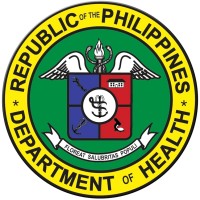
Department of Health (Philippines)
The Philippine Department of Health (abbreviated as DOH; Filipino: Kagawaran ng Kalusugan) is the executive department of the Philippine government responsible for ensuring access to basic public health services by all Filipinos through the provision of quality health care and the regulation of all health services and products. It is the government's over-all technical authority on health. It has its headquarters at the San Lazaro Compound, along Rizal Avenue in Manila. The department is led by the Secretary of Health, nominated by the President of the Philippines and confirmed by the Commission on Appointments. The Secretary is a member of the Cabinet. The current Secretary of Health is Francisco Duque.






